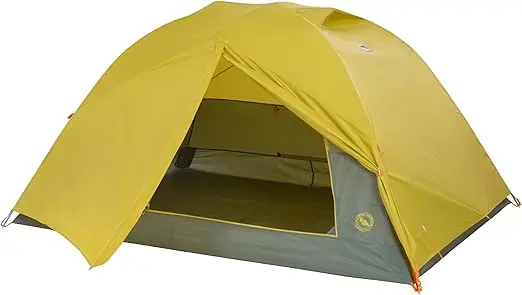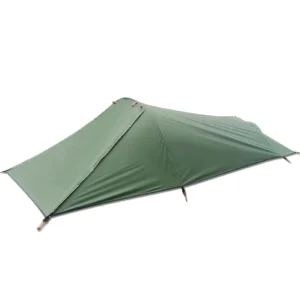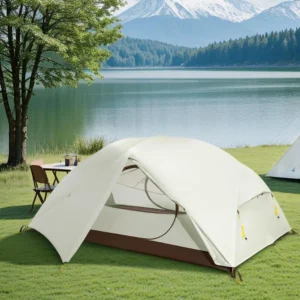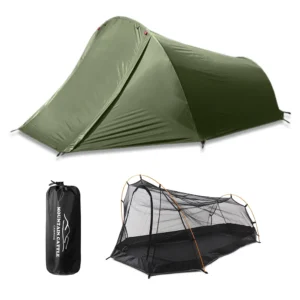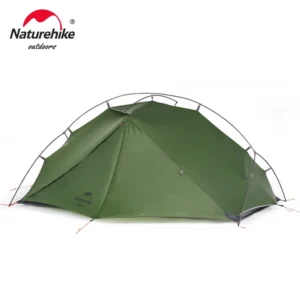Understanding Tent Weight Importance for Backpackers
When planning a backpacking trip, every ounce matters. Your tent is typically one of the heaviest items in your pack, making its weight a critical consideration for any serious backpacker. A properly chosen tent weight can significantly impact your overall hiking experience, energy levels, and even the distances you can comfortably cover each day.
Most experienced backpackers aim to keep their tent weight between 15-25% of their total pack weight. This proportion ensures you’re not overloading yourself with shelter while still maintaining adequate protection from the elements. For example, if your target pack weight is 30 pounds, your tent should ideally weigh between 4.5-7.5 pounds at most.
Consider this simple calculation: carrying a 5-pound tent versus a 2-pound tent over a 50-mile trip effectively means you’re carrying an extra 150 pounds of cumulative weight (3 pounds × 50 miles). That extra weight translates directly into:
- Increased fatigue and reduced hiking distance
- More stress on joints and muscles
- Higher energy expenditure
- Decreased overall enjoyment
Understanding different shelter options for two campers becomes crucial when trying to optimize your pack weight. The concept of “base weight” (the weight of your gear without consumables like food and water) is fundamental to backpacking efficiency, and your tent plays a major role in this calculation. Many backpackers follow the 20 percent rule for backpacking, which suggests that no single item should exceed 20% of your base weight.
Key Tent Weight Definitions Every Backpacker Should Know
Before diving into specific weight recommendations, it’s important to understand the different weight specifications manufacturers use. These definitions help you compare tents accurately and know exactly what you’re carrying:
Packaged/Packed Weight:
– The complete package as purchased from the manufacturer
– Includes tent body, rainfly, poles, stakes, guy lines, stuff sacks, and all accessories
– Usually the heaviest measurement and what’s printed on the box
– Ranges from 3-6+ pounds depending on tent size and design
Trail/Minimum Weight:
– The weight of just the essential components needed for setup
– Typically includes only the tent body, rainfly, and poles
– What most backpackers actually carry after optimizing their load
– Usually 0.5-1 pound lighter than the packaged weight
Fast Fly/Pitch Weight:
– The minimal setup option using just the rainfly, poles, and footprint
– Offers basic shelter without the full tent body
– The lightest configuration possible with the tent components
– Can reduce weight by 1-2 pounds from packaged weight
When shopping for backpacking tents, the trail weight is generally the most relevant specification for real-world use. However, manufacturers sometimes calculate these weights differently, so reading the fine print is essential. Many experienced backpackers further reduce weight by replacing heavy stakes with lightweight alternatives or using trekking poles instead of tent poles where design permits.
Understanding what makes a tent ultralight involves knowing these weight definitions and how they apply to your specific needs. For example, a tent marketed as 3 pounds might have a trail weight of 2.5 pounds and a fast pitch weight of just 2 pounds—making it significantly lighter than initially perceived.
Backpacking Tent Weight Benchmarks: What’s Considered Light?
When evaluating backpacking tents, a helpful general rule is to aim for 2.5-3 pounds per person. However, this benchmark varies significantly based on tent capacity and design philosophy. Here’s a comprehensive breakdown of weight expectations by tent capacity and weight class:
| Tent Capacity | Ultralight (<2 lbs) | Lightweight (2-3.25 lbs) | Midweight (3.25-4.5 lbs) | Heavyweight (>4.5 lbs) |
|---|---|---|---|---|
| 1-Person | 0.8-1.5 lbs | 1.5-2.5 lbs | 2.5-3.5 lbs | >3.5 lbs |
| 2-Person | 1.5-2 lbs | 2-3.25 lbs | 3.25-4.5 lbs | >4.5 lbs |
| 3-Person | 2-2.5 lbs | 2.5-4 lbs | 4-5.5 lbs | >5.5 lbs |
These weight classes have evolved significantly over the past decade as materials and designs have improved. What was once considered ultralight might now fall into the lightweight category as new innovations push the boundaries of what’s possible.
The question of whether 3kg for a backpacking tent is too heavy depends entirely on your needs and priorities. For weekend warriors or those prioritizing comfort, a 3kg (6.6 lb) tent might be perfectly acceptable. For long-distance hikers or those pursuing a minimalist approach, this would typically be considered too heavy.
Ultralight backpacking tents represent the cutting edge of weight reduction, using premium materials and simplified designs to achieve remarkable weight savings. These tents often make specific compromises to achieve their minimal weights, which leads us to our next important consideration: the factors that determine tent weight.
Factors That Determine a Backpacking Tent’s Weight
Tent Capacity and Livable Space
The relationship between tent capacity and weight is straightforward but important. Each additional person accommodation typically adds 0.5-1.5 pounds to the tent’s weight, depending on the design and materials.
When evaluating tent capacity:
- Floor dimensions directly impact weight – more square footage means more material
- Peak height affects both comfort and weight – higher ceilings require more structural support
- Wall shape (vertical vs. sloped) influences perceived space without always affecting weight
- Interior volume per ounce is a useful metric for comparing efficiency
Determining what size tent is good for 2 people involves balancing weight considerations with comfort needs. The standard floor area for a 2-person tent ranges from 28-35 square feet, but the same “2-person” designation can result in significantly different usable space depending on the layout and design.
Many backpackers choose to “size up” (using a 2-person tent for solo hiking or a 3-person tent for two hikers) to gain more living space at the cost of carrying extra weight. This trade-off becomes especially important on longer trips where tent comfort becomes increasingly valuable.
Tent Materials and Their Weight Impact
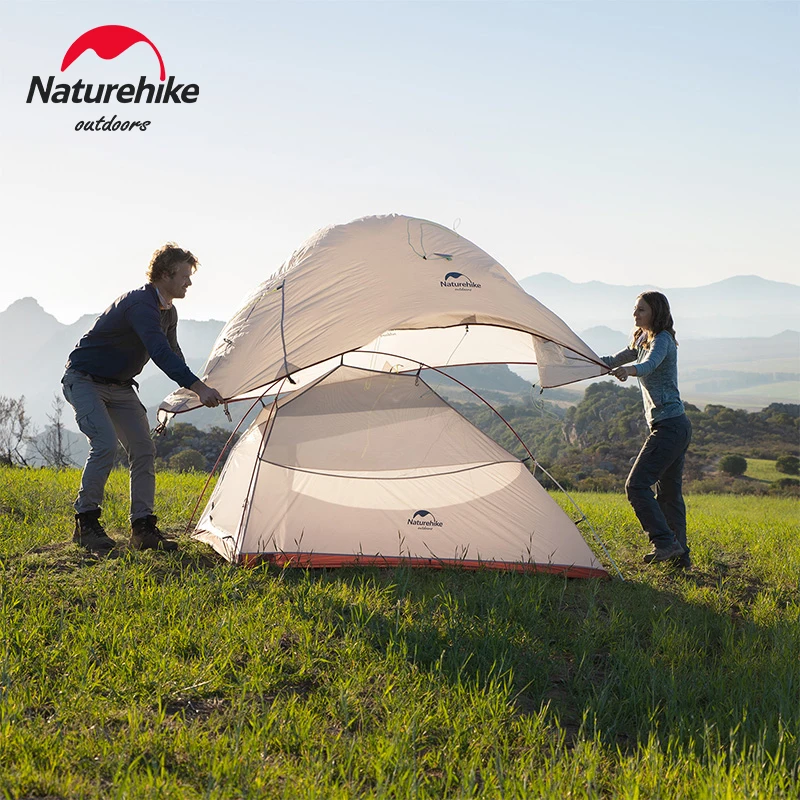
The materials used in tent construction have the most significant impact on overall weight:
Fabrics:
– Nylon (including Silnylon): Lightweight, relatively inexpensive, and stretches when wet. Common in lightweight tents with weights of 1-1.3 oz/yd².
– Polyester (including Silpoly): Slightly heavier than nylon but maintains tension when wet. Typically weighs 1.1-1.5 oz/yd².
– Dyneema/Cuben Fiber: Ultra-premium, extremely lightweight material that doesn’t absorb water. Weighs just 0.5-0.8 oz/yd² but costs significantly more.
Fabric Denier (D):
This measurement indicates thread thickness and directly affects weight and durability. Lower numbers mean thinner, lighter fabric:
– 7-10D: Ultralight but requires careful handling
– 20D: Common in lightweight tents, reasonable durability
– 30-70D: Found in more robust designs, significantly heavier
Pole Materials:
– Aluminum: Standard in most quality tents, good strength-to-weight ratio
– Carbon fiber: 30-40% lighter than aluminum but more expensive and potentially more fragile
– Fiberglass: Heavy but inexpensive, rarely used in backpacking tents
Even small components like stakes (aluminum vs. titanium), zippers (size and length), and guyline materials contribute to overall weight. Understanding tent materials for balanced pack weight helps backpackers make informed decisions about these weight-versus-durability trade-offs.
Seasonality and Weather Protection
A tent’s intended season rating significantly impacts its weight profile:
- 3-season tents (spring, summer, fall) use lighter materials with more mesh for ventilation
- 4-season tents (including winter) require stronger poles, thicker fabrics, and more robust construction, adding 1-3 pounds
- Extended vestibules and additional guy points for severe weather protection add weight
- Ventilation features like additional doors or vents can add several ounces
4-season winter 2-person tents typically weigh 25-50% more than their 3-season counterparts with the same floor dimensions. This weight difference comes from heavier fabrics, additional pole structures, and reinforced stress points designed to handle snow loading and high winds.
Tent Design and Construction Types
The fundamental design approach dramatically affects tent weight:
- Double-wall tents have separate tent body and rainfly components, offering better condensation management but weighing more
- Single-wall tents combine these elements, saving weight but potentially increasing condensation issues
- Freestanding tents use poles for complete structural support, offering setup flexibility but requiring more pole material
- Non-freestanding tents (including trekking pole backpacking tents) use stakes, guylines, and sometimes your trekking poles for structure, saving significant weight
A trekking pole tent can save up to 1-1.5 pounds compared to a traditional pole tent of similar size, simply by eliminating dedicated poles. This design choice requires more setup skill but rewards the user with substantial weight savings.
Critical Trade-Offs: Balancing Weight with Performance
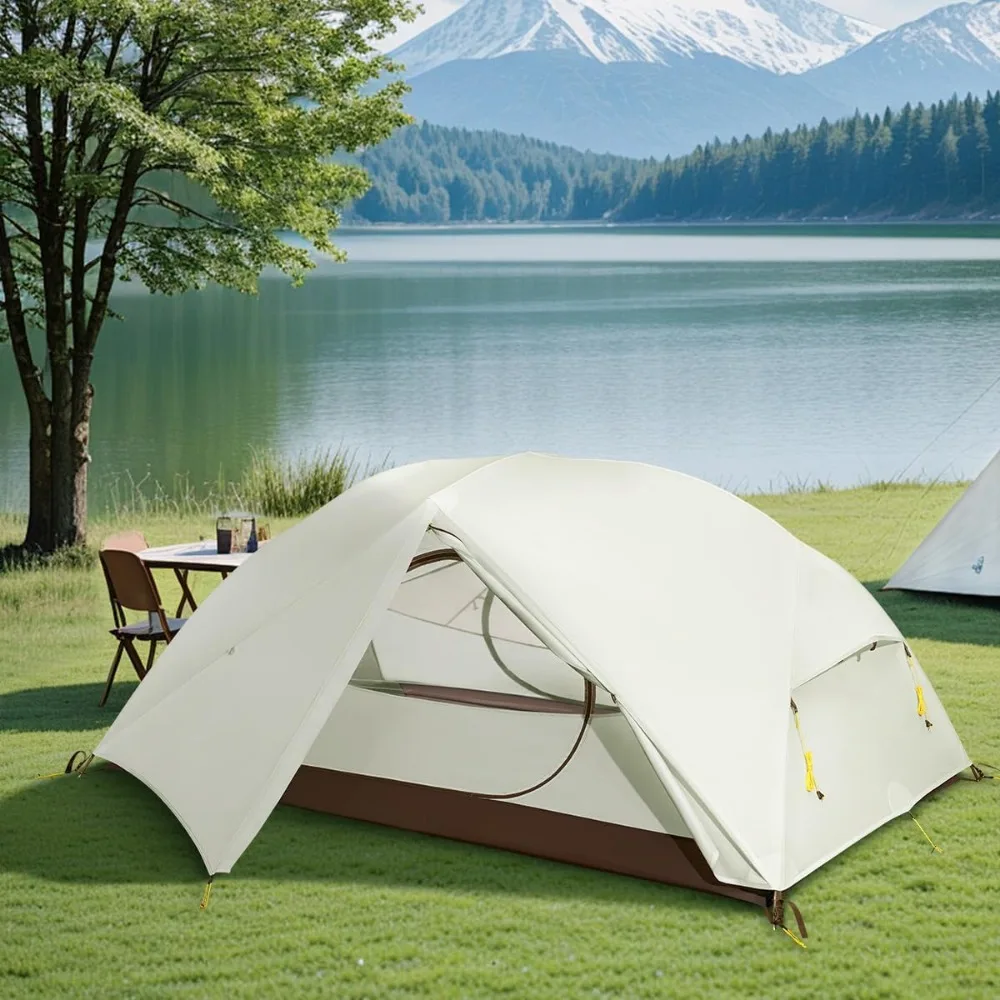
Every reduction in tent weight introduces potential compromises. Understanding these trade-offs is essential for making informed decisions:
Weight vs. Durability
– Ultralight fabrics (7-10D) may tear more easily than standard fabrics (30-70D)
– Thinner poles save weight but may bend or break under severe stress
– Minimalist components like zipper pulls and cord locks are more prone to failure
– Impact: Potential field repairs or premature replacement needs
Weight vs. Living Space
– Tapered floor designs reduce weight but limit usable space
– Lower peak heights decrease material but create less headroom
– Minimalist designs may eliminate convenient features like internal pockets
– Impact: Less comfort during extended periods inside the tent
Weight vs. Weather Protection
– Fewer guyout points means less stability in high winds
– Minimalist rainflys may provide less coverage in driving rain
– Simpler vestibules offer less protected storage
– Impact: Potentially compromised shelter in severe conditions
Weight vs. Setup Complexity
– Non-freestanding tents save weight but require more skill to pitch properly
– Fewer poles simplifies carrying but can complicate setup
– Specialized stake requirements may limit where you can pitch the tent
– Impact: More time and effort to establish shelter, especially on difficult ground
Weight vs. Cost
– Ultralight materials often cost significantly more
– Premium lightweight tents may be 2-3 times more expensive than standard versions
– Example: A standard 2-person tent might cost $200-300, while an ultralight version costs $400-600
– Impact: Budget constraints may limit access to the lightest options
Mastering the art of lightweight backpacking requires understanding these critical trade-offs and making intentional decisions based on your specific priorities and needs. The lightest option isn’t always the best option for every situation or user.
How to Choose the Perfect Tent Weight for Your Needs
Finding your ideal tent weight involves honest self-assessment about your backpacking style and needs:
Consider your typical trip profile:
– Weekend trips (1-3 nights) can accommodate slightly heavier gear for more comfort
– Extended journeys (4+ nights) benefit significantly from lighter options
– Thru-hiking endeavors almost always prioritize minimum weight
Evaluate your usual terrain and conditions:
– Exposed, high-elevation routes require weather-worthy shelters despite weight penalties
– Forested areas with natural windbreaks might allow more minimalist options
– Hot, humid environments benefit from better ventilation features
Assess your comfort preferences:
– Do you spend minimal time in your tent, or is it your sanctuary?
– How important is being able to sit up fully or change clothes easily?
– Do you need space to store gear inside during storms?
Be realistic about your experience level:
– Beginners often benefit from more forgiving, easier-to-setup designs
– Advanced users can maximize specialized ultralight gear with proper technique
– Consider the learning curve required for non-freestanding or trekking pole shelters
Factor in your budget:
– Determine your price-per-ounce tolerance
– Consider long-term investment value versus immediate needs
– Evaluate where weight savings matter most in your overall kit
When backpacking with partners, load-sharing can dramatically reduce individual carried weight. One person can carry the tent body while another carries the fly and poles, effectively cutting each person’s shelter weight in half.
The process of picking the perfect ultralight backpacking tent involves these considerations along with trying different lightweight backpacking tent options to see what works best for your specific needs.
Lightweight Backpacking Tent, Ultralight Backpacking Tent, Ultralight Bivy Tent
Ultralight Single Person Camping Tent with Aluminum Poles for 3-Season Backpacking Waterproof DesignPrice range: $94.88 through $326.82 Select options This product has multiple variants. The options may be chosen on the product pageLightweight Backpacking Tent, Ultralight Backpacking Tent, Waterproof Backpacking Tent
$391.05 Select options This product has multiple variants. The options may be chosen on the product pageHeavy Duty 4 Season Tent, Mountaineering Tent, Winter Camping Tent
$870.40 Select options This product has multiple variants. The options may be chosen on the product pageCompact Backpacking Tent, Lightweight Backpacking Tent, Waterproof Camping Tent
$335.52 Select options This product has multiple variants. The options may be chosen on the product pageUltralight Backpacking Tent, Ultralight Dome Tent, Winter Camping Tent
Price range: $369.63 through $370.07 Select options This product has multiple variants. The options may be chosen on the product pageHeavy Duty 4 Season Tent, Ultralight Freestanding Tent, Winter Camping Tent
$3,722.66 Select options This product has multiple variants. The options may be chosen on the product page
Are Ultralight Tents Worth the Investment?
Ultralight tents command premium prices, often costing $400-700 compared to $200-300 for standard backpacking tents. This price differential raises a legitimate question: is the weight savings worth the additional cost?
For frequent backpackers, the investment often pays dividends through:
– Reduced physical strain over hundreds of miles
– Increased daily mileage potential
– Enhanced overall enjoyment due to carrying less weight
– Better long-term joint and muscle health
However, occasional backpackers might find less value in the premium price tag. Someone who takes 2-3 weekend trips annually might not experience enough cumulative benefit to justify doubling their tent budget.
When considering this investment, remember that your tent is one of the backpacking big 3 essential gear items alongside your backpack and sleep system. Together, these three items typically represent the heaviest and most expensive components of your kit, making weight optimization here particularly impactful.
The durability factor also merits consideration—ultralight materials generally require more careful handling and may have shorter lifespans than their heavier counterparts. This maintenance requirement should factor into your cost-benefit analysis.
Can You Go Too Light? When Minimal Isn’t Enough
While the pursuit of lightweight gear is generally beneficial, there are legitimate scenarios where ultralight tents might prove insufficient:
Extended poor weather conditions can expose the limitations of minimalist shelters. A tent that performs admirably during a weekend shower might become problematic during days of continuous rainfall or driving winds.
Extreme environments pose particular challenges for ultralight designs:
– High alpine zones with unpredictable storms and high winds
– Winter camping with snow loading concerns
– Desert conditions with intense UV degradation of lightweight fabrics
Additional space requirements can also push beyond ultralight capabilities:
– Backpacking with dogs or children
– Extended trip provisions requiring more protected storage
– Gear-intensive activities like photography or climbing
Beyond physical protection, there’s also a psychological comfort factor that shouldn’t be discounted. The security of a robust shelter during challenging conditions provides mental well-being that directly impacts your outdoor experience.
According to expert resources, there’s general agreement that pushing below certain weight thresholds (around 1.5 pounds for a 1-person tent) often introduces compromises that may not be worth the ounces saved for most users in varied conditions.
Should Beginners Start with Lighter or Heavier Tents?
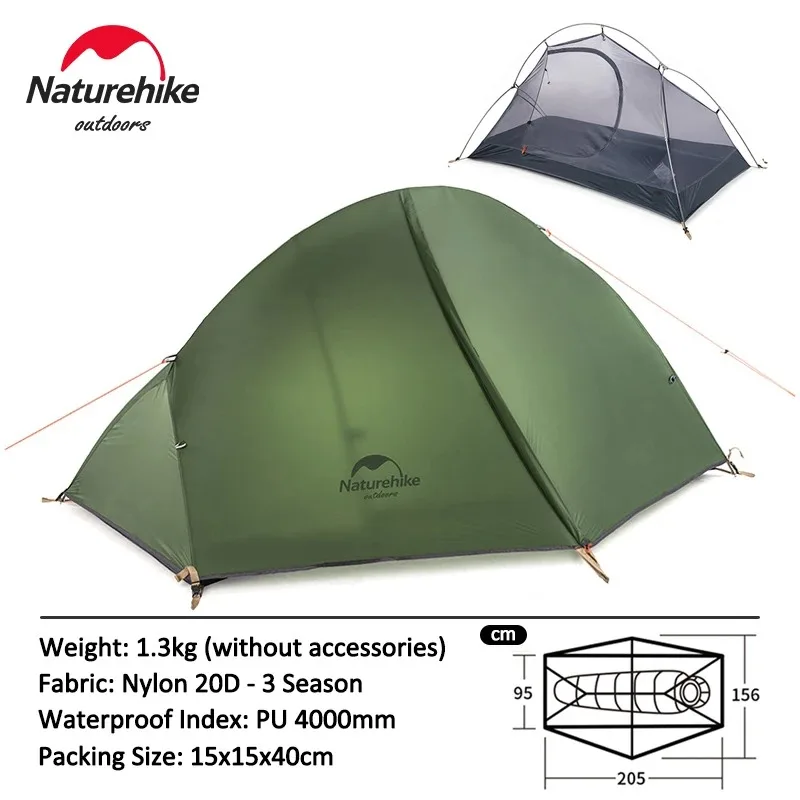
New backpackers face a challenging decision: invest in lightweight gear from the start or begin with more forgiving, often heavier options? Both approaches have merit.
Advantages of starting with more traditional tent weights (3.5-5 pounds):
– Greater durability during the learning curve
– Easier setup with more intuitive designs
– Lower initial investment while determining commitment level
– More forgiving of rough handling or improper care
Advantages of starting with lighter options (2-3.5 pounds):
– Immediate experience of carrying less weight
– No need to “upgrade” later if backpacking becomes a passion
– Better introduction to careful gear handling habits
– More enjoyable first experiences without excessive weight
A sensible middle-ground approach for beginners might include:
– Starting with a quality lightweight (not ultralight) tent
– Looking for freestanding designs for easier setup
– Choosing models with slightly more durable fabrics (20-30D)
– Selecting established brands with good warranty policies
Understanding how heavy a hiking tent should be helps beginners make informed decisions without falling into the trap of carrying unnecessarily heavy gear based on outdated advice.
How to Reduce Your Tent Weight Without Buying New Gear
Not ready to invest in a new ultralight tent? There are several effective strategies to reduce your current tent’s carried weight:
Replace heavy stakes with lightweight alternatives – Switching from stock aluminum stakes to titanium or carbon fiber versions can save 2-4 ounces.
Use trekking poles instead of dedicated tent poles – If your tent design allows adaptation, learning how trekking pole tents work can save up to a pound of carried weight.
Leave non-essential components at home – Many tents include gear lofts, extra stakes, repair kits, or stuff sacks that aren’t always necessary.
Optimize your ground cloth approach – Using lightweight polycryo (window insulation film) instead of manufacturer footprints can save 3-6 ounces.
Repackage your tent components – Replace heavy stuff sacks with lightweight alternatives or use compression techniques to reduce packed size.
These modifications can often reduce tent weight by 0.5-1 pound without changing your primary shelter, representing significant weight savings with minimal investment.
The Future of Lightweight Backpacking Tents
The evolution of backpacking tent design continues to push weight boundaries while improving functionality. Current innovation trends include:
- Bio-based fabrics that reduce environmental impact without weight penalties
- Hybrid designs that blend the best aspects of different shelter types
- Multi-functional components that serve multiple purposes
- Improved waterproofing technologies that maintain performance with lighter fabrics
As materials science advances, we can expect continued improvements in strength-to-weight ratios, allowing even lighter tents without sacrificing protection. The definition of “ultralight” will likely continue to shift as what once seemed impossibly light becomes standard.
The industry is also responding to sustainability concerns, developing recycled materials and more environmentally conscious manufacturing processes that don’t compromise performance. These advancements suggest that tomorrow’s lightweight tents will not only be lighter but also more environmentally responsible.

